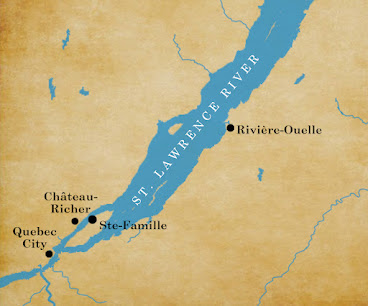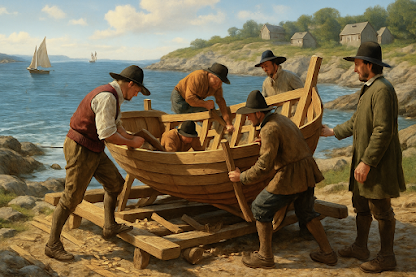M. before 1834 in (probably) County Mayo, Ireland
Wife: Julia _______
D. after 1880 in (probably) Sullivan County, New York
Many 19th-century immigrants to America triumphed over difficult circumstances, rising from poverty to offer a better future for their children. But Lawrence McGuire didn’t have such a story. He was a man with a drinking problem, which seemed to have kept him from making much of himself in life.
Lawrence was very likely born in County Mayo, Ireland, and based on later records, his birth was in about 1810. He had no education and it can be assumed that his peasant roots went back for generations. As a young man, he married a County Mayo woman known only by the first name Julia; their marriage probably happened during the early 1830s.
Lawrence and Julia had at least four children born between about 1834 and 1850. Like most of the men in Catholic Ireland, he was a tenant farmer who struggled on a barely subsistent income, and was wiped out during the years 1846 to 1848 when the potato crop failed. Lawrence had no choice but to leave his homeland. The family boarded a ship in around 1851 or 1852 and migrated to America; the record of their crossing has not been found.
By 1852, Lawrence found a place to live in upstate New York, establishing a small farm in the town of Thompson, located in Sullivan County. Census records showed that in 1855, his frame house was valued at $50. In 1860, Lawrence owned a farm worth $300, though it was a lot less valuable than his neighbors. His three older children left the household during the late 1850s, and the youngest daughter was gone before 1875; probably they all got married. None of the children were noted as attending school, even though other children did who lived nearby.
Plat map of Sullivan County showing location of Lawrence’s farm.
The most detailed documents of Lawrence’s life were in 1875, where the New York State Census described the condition of his farm. His main achievement was that he became a U.S. citizen, but everything else points to a life of poverty. Most of the farmers in the area had much more land and wealth than he did; Lawrence’s property was worth only $300 while others typically had values in the thousands. Neighboring farms grew several crops such as oats, rye, corn and apples, he only grew a quarter-acre of potatoes; his 20 bushels of product was dwarfed by the production of farms around him. And he was the only one not to have a single animal on his farm, not even a chicken.
One more record from 1875 gave a sad reason why Lawrence was a failure as a farmer. In November of that year, his wife Julia was admitted to the county poorhouse. The form filled out by the administrators told that she had become destitute and could no longer work, and the reason given was that “due to the intemperate habits of her husband, they could not accumulate any property, and they have parted.” From this, it’s easy to imagine a scenario where she had been doing the work on the farm while he drank heavily, until she reached an age where she couldn’t go on.
Old man alone on a farm. (AI-generated image)
Lawrence appeared in one more census in 1880. While he lived alone on whatever was left of the farm, Julia still resided in the poorhouse, now described as “insane.” They each likely died within a few years.
Children:
1. Patrick McGuire — B. 25 Dec 1834, (probably) County Mayo, Ireland; D. 1 Apr 1882, Washington Lake, Minnesota; M. (1) Bridget Tuffy, before 1857, (probably) Sullivan County, New York; (2) Mary Toole (1846-1904), 7 Jan 1867, Henderson, Minnesota
2. Bridget McGuire — B. about 1836, (probably) County Mayo, Ireland
3. Michael McGuire — B. about 1842, (probably) County Mayo, Ireland
4. Catherine McGuire — B. about 1850, (probably) County Mayo, Ireland
Sources:
1860, 1870, and 1880 U.S. Censuses in New York
1855 New York State census
1875 Sullivan County, New York poorhouse records
Marriage certificate of Patrick McGuire and Mary Toole, Henderson, Minnesota, 7 Jan 1867
Death certificate of Patrick McGuire, Washington Lake, Minnesota, 1 Apr 1882




















